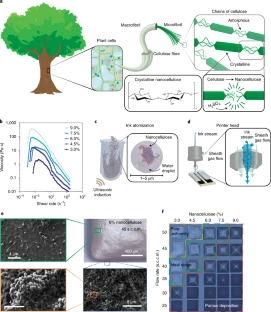EurekAlert April 26, 2021
Developments in transient electronics have focused on increasing the biocompatibility, whereas efforts to develop methods to recapture and reuse materials have focused on conducting materials, while neglecting other electronic materials. Researchers at Duke University have made all-carbon thin-film transistors using crystalline nanocellulose as a dielectric, carbon nanotubes as a semiconductor, graphene as a conductor and paper as a substrate. They developed a crystalline nanocellulose ink that is compatible with nanotube and graphene inks and can be written onto a paper substrate using room-temperature aerosol jet printing. The addition of mobile sodium ions to the dielectric improves the thin-film transistor on-current and subthreshold swing and leads to a faster voltage sweep rate than without ions. The devices also exhibit stable performance over six months in ambient conditions and can be controllably decomposed, with the graphene and carbon nanotube inks recaptured for recycling and reprinting new transistors. They demonstrated the utility of the thin-film transistors by creating a fully printed, paper-based biosensor for lactate sensing…read more. TECHNICAL ARTICLE

Nanocellulose printing. Credit: Nature Electronics (2021)